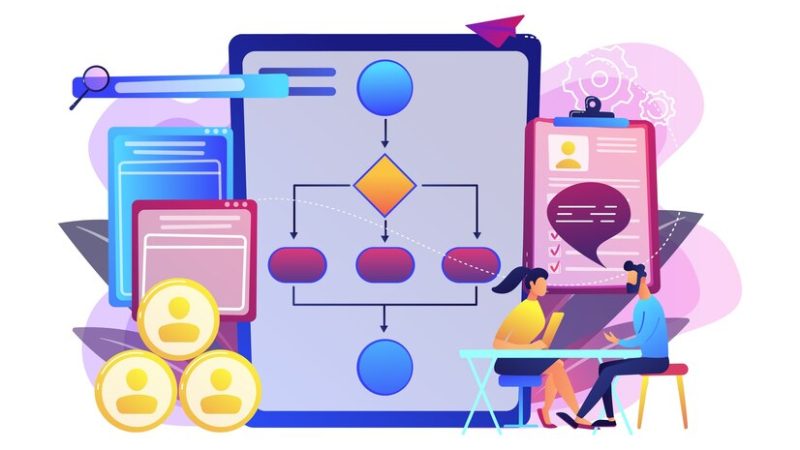Operating a business has always been a learning curve. Everyday you learn something new and implement in a way that gives your business a clear edge over others. A unique business identity is important in view of emerging competitiveness and changing shopping habits. Technology is hopefully the glimmer of hope you need to overcome the rising pressure to perform and match customer expectations. But it does come with certain challenges that most businesses would probably overlook.
As the innovations are taking place, businesses must prioritize implementing technologies such as data-driven decision making, sensor based energy usage, and automation as a way to make their entire process in par with the industrial standards.
Automation is definitely a game changer for small businesses looking to save on cost and achieve significant benefits, but adapting to new automation tools and workflows will take time from the business and is quite challenging for the employees during the first stages of action. Automation technologies are quite popular among many manufacturing industries including clothing, consumer electronics, large format printing, automobiles and more.
Businesses will face many new technical challenges as automation continues changing their operations. By investing in the right technology, companies can keep up with the ever-changing digital age demands.
Here is a brief overview of a few of the most common challenges businesses will face in the year 2022 regarding technology.
-
Supply Chain
From the pandemic phase, businesses have learned how disruption in sourcing and delivery of goods can cause the supply chain framework to collapse. This is perhaps where technology can be a light of hope. Leveraging innovative and real-time technology with data-driven methods, businesses can streamline sourcing operations and transform them into a robust solution by assessing, measuring and optimizing business to user journey.
Technology such as Automation and data-driven inventory management undoubtedly can enhance the scope and accuracy of supply chain routes and its efficiency. By approaching the supply chain model in a novel way companies can address the existing challenges and the possible challenges inevitably with the adoption of these innovations.
-
Waste Management
Even when sustainability goals are in focus, the company is fully accountable for what sort of waste is generated, and for the environmental impact that waste creates. It has some ties with economic growth. The amount of waste generated gives a clear picture of how efficient and cost effective the manufacturing process is. This is where companies must take action if they are generating waste way beyond regulatory compliance. Keeping the process in check by implementing technology meant to improve waste reduction and process enhancement is the way to go and ensure that the waste generation is negligible.
The most important part of waste reduction and management is overall planning and predictable analysis to replan and remodel the whole manufacturing process and identify areas where sophisticated technology can segregate and track waste and isolate them in minimal quantities. However, inadequate capital requirement and access to modern technology may deter businesses from reaping the benefits.
-
Sustainable Manufacturing Practises
More and more companies are now realizing the importance of sustainability as a way to improve their manufacturing process. With sustainability as a broader objective in place, companies can regain competitiveness and appeal to customers by gaining their trust. By placing and positioning themselves as a environmentally conscious brand, companies can prominently carve a distinct space for their product and services in a saturated market. Among the reasonable benefits are operational efficiency, clean energy use, elevated brand reputation, and customer growth.
This may although sound attractive, achieving these sustainability goals comes with a cost. Manufacturing processes are changing, and with multiple regulatory constraints in place, companies must explore alternative techniques and technology. Automation is a critical and most promising thing to be implemented. The automation technology does have some benefits in formulating a process that is sustainable yet efficient but most businesses are resistant to transit due to lack of capital and other inherent constraints.
-
Customer Acquisition
Acquiring customers is one of the fundamental priorities for businesses and one of the common challenges. And this is where the success and growth of a business hinges. Technology has made it way simpler than before. Now businesses can learn how customers behave and respond to their offering. And make improvements to their consumer offering in tandem with their feedback or based on their behavior. While this may sound promising, leveraging such technology without proper expertise and guidance would be a hard nut to crack.
For this purpose, you may have to hire a dedicated team, or create an inhouse department that relentlessly puts their efforts into strategising a powerful strategy. Although technology is there to prospect and funnel down relevant customers for your business, it cannot be put into use until the team is fully trained to handle and leverage its use. Another key challenge would be to ideate and optimize the return on investment spent to acquire the customers, but without the complete understanding of modern marketing tools, businesses might end up spending more than the profits projected.
The Bottom Line
Businesses must create a benchmark for the use of technology into their processes. They must accept the fact that technology is there to help to stay competitive and create an offering that is fully acceptable by customers. Understanding these challenges and preparing an action plan to implement them in the near future can win the businesses brownie points.








